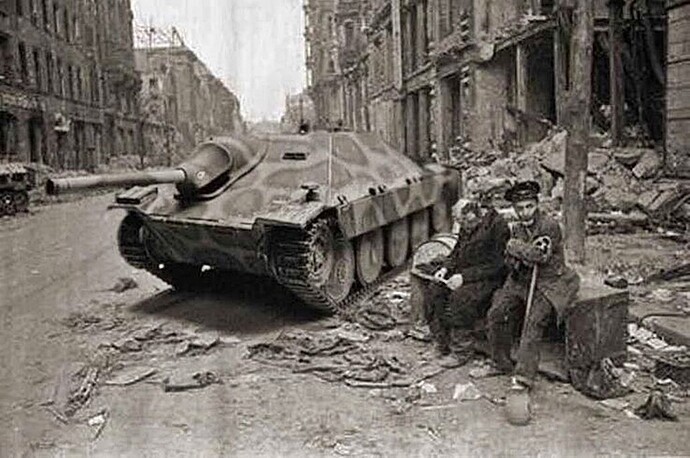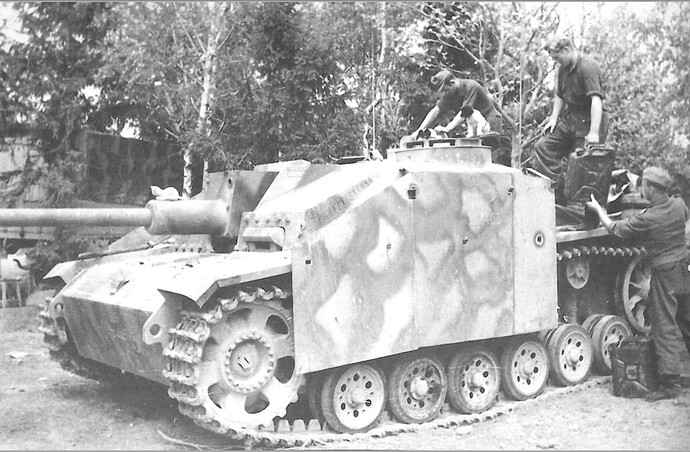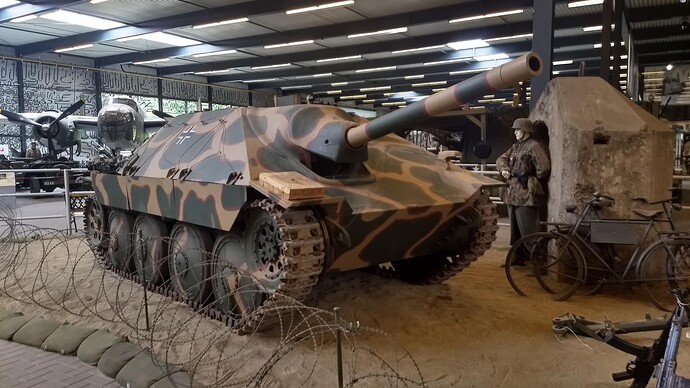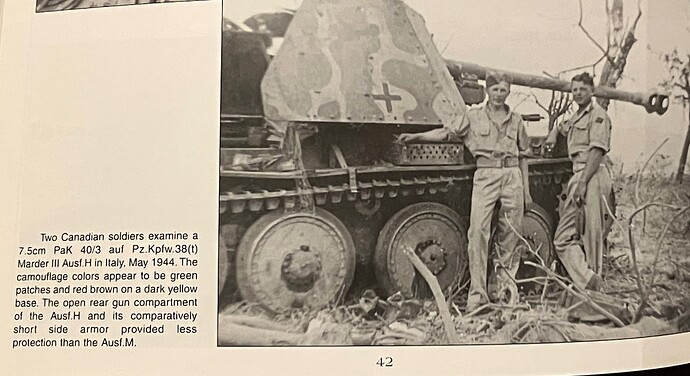While I can not call myself an expert in German camouflage, from what I have read Dan Egan reply is much more inline with general knowledge than what you wrote. No doubt you missed the early war gray/brown schemes, and I would also love to see those dozens of grey Panthers -just hope you are not referring to the primed hulls found unfinished on factories…
@Dan_Egan Your post is 100% factual and correct.
@Whitney_Foreman Your post is, to be polite, mythical and whimsical.
Anyone with 50 years experience would know that a Dunklegrau Panther G is the product of a Spanish artist’s imagination, nothing more.
Yes, I’ve been working on a spreadsheet showing all the German armor types produced over the course of the war versus the paint directives issued so I can see what vehicles started gray and later switched to dark yellow and those that were built after, plus other paint directives like the African schemes and such.
I have no gray Panthers on it.
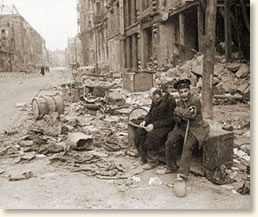
Looks like someone drove the Hetzer away while the two old men remained motionless. It’s also odd that the depth of field decreases dramatically towards the rear of the vehicle, yet the building behind it remains in focus… ![]()
Love to see those dozens of grey Panthers too. Fakes abound.
“Extraordinary claims require extraordinary evidence” - Carl Sagan.
There are a few photos in Panzer Colors vol.1 that show some AFVs in similar schemes of outlined camo colors. I know that the captions have goofs, but the photos are pretty solid.
Yes, there are definitely outlined colors out there, but I’m pretty sure OP was really focusing on the specific version on the Marder III Ausf M.
Just for the record, I’m not doubting the validity of the OP’s Marder’s paint scheme, or any of the other vehicles sporting the same, I have plenty of photos illustrating this pattern on a number of different vehicles. I’m merely pointing out the frequency and audacity of people posting fake photos online and the dubious claims made by spurious authors seeking to capitalize on their audience’s eagerness to accept them.
I suppose so. I just interpreted his original post as wanting to do a vehicle in that style of camo scheme.
OP here, I’m interested in all things German camo. I find these outlined schemes kinda neat, and should be a good challenge.
Also have to do an elefant in this scheme one day
Yeah, that’s a pet peeve of mine… along with colorized original B&W photos… stinking photo editing computer ![]() (insert your own individual insulting obscenity)…. but that’s just me.
(insert your own individual insulting obscenity)…. but that’s just me.
Yes, there’s a good chance someone misinterpreted really heavy spray on the outlines that was filled in with a lighter application as two different colors as I have found pics of the Marder in most every other usual pattern except this one, but not going to lie I want to paint mine in that scheme as well.
As long as none of you ever visit no one will know if it’s real or not, because my family sure doesn’t know.
I definitely think this one is two colors
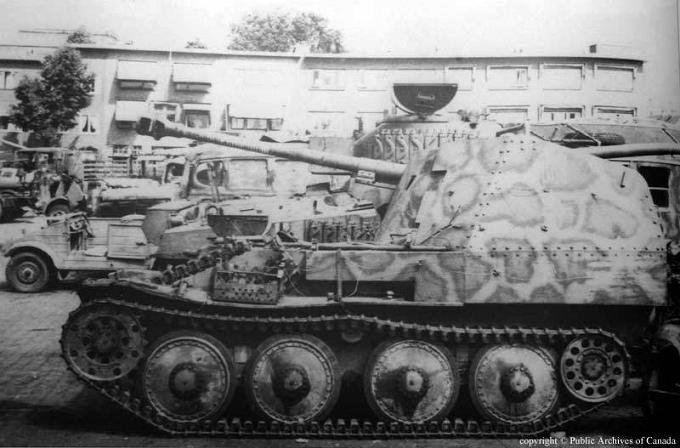
But I agree some are likely just heavier spray
Have you seen any other pics than this one for the scheme? This is the only one I have been able to find.
No that’s the only one I can find so far
Well, you know for sure that at least one was painted that way. So no one can say “They didn’t do that!” Go for it!
Ken
Yeah I think that’s the approach I’ll take!
Ok, I know this is a museum piece, (Overloon), and all the baggage that entails. My point being this is ONE interpretation of this scheme, brown outlining green. I have also seen the reverse depicted as well, at least in artwork. I also don’t discount the possibility of either color with a heavier (read darker) overspray of the same color as the interior of the cloud. I think it would be rather difficult to conclusively determine one way or the other which scheme we are examining without an extant example or genuine color slide from the period. It is MHO that the prevalent convention is red-brown outlining olive-green, for whatever that is worth. Note the rather low contrast between the two colors, even when we know which is which.
I will also admit to using the scheme when I used to play World of Tanks, so…
It does look cool which is why we are attracted to it, but to be honest it reminds me more of Italian Reggio Aeronautica camouflage patterns.
A little bit closer to where we want to be. An Ausf H in Italy, May, ‘44. German Self-propelled Guns, Concord Pub., page 42.
Cheers!! Just what I was hoping for! I also bought the Ausf H from Tristar so perhaps I will do that one in the camo from the book. I wanted to do it as an Italian campaign one anyway!
